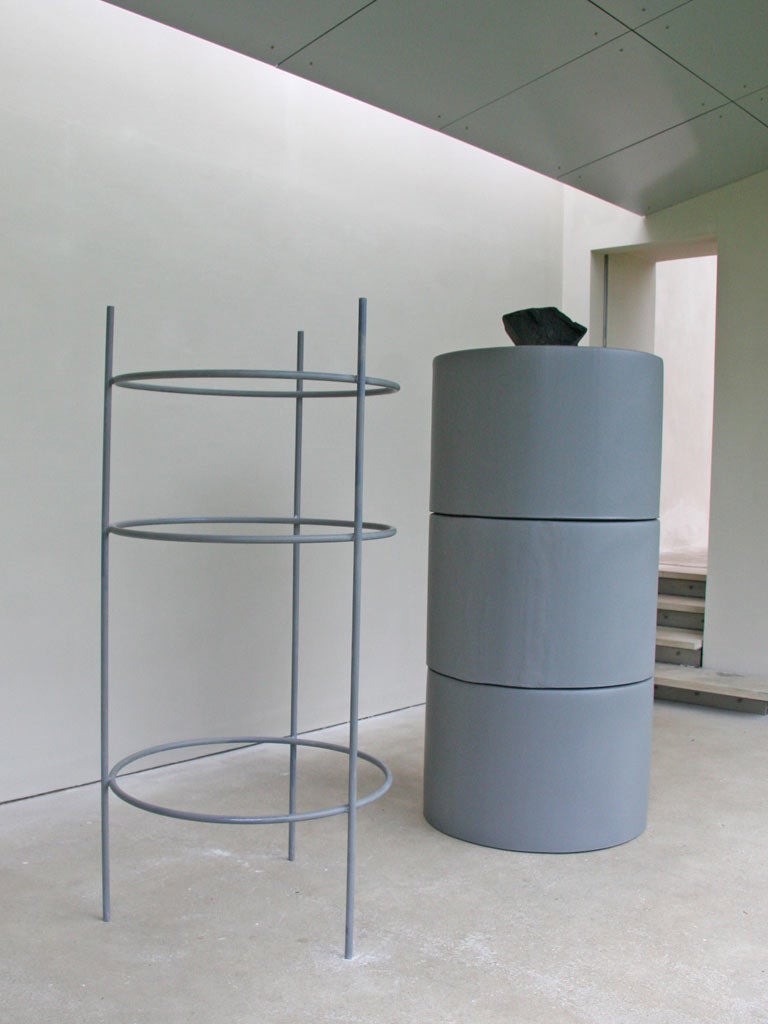Alison Wilding: How the Land Lies New Art Centre, Salisbury

The sculptor Alison Wilding is not as well known as she deserves to be. She tends to be disinclined to talk about her work. Journalists are not presented with easily digestible narratives.
The works are slow to yield up their secrets. For all that, this woman is one of the most thoughtful and serious sculptors of the post-war period.
This new body of work, four wall-hung pieces and four that sit on the floor, is contained within the orangery of a sculpture park in Wiltshire. We approach the works across a generous stretch of lawn. The long, corridor-like space of the orangery itself is top-lit, so that the rooms are filled with an airy lightness of mood. The works, fittingly for this white-walled space, are all about the play of illusion, how weighty materials can look light as air against these walls, and can be yoked together to create strange conjunctions.
The largest piece on display here, With This Rock..., brings together two forms that seem to exist in some kind of an enigmatic relationship with each other. The first consists of three stacked, grey, drum-like shapes, on top of which sits a chunk of basalt which may have, meteor-like, fallen from the sky. Next to that stacking of seemingly heavy, solid forms sits a hooped steel structure which looks like the armature around which the drum stack may have been created. Except that it has sprung away from it as if by magic, and now, leaning gently towards its neighbour, appears to be yearning in its direction.
Nothing is quite as it seems. The stacked drums are made of foam. It is the grey paint which has lent them that illusion of mass and solidity. When viewed through the floor-to-ceiling window, the steel armature looks and feels a little like a ghostly drawing in the air. The weight and the massiness of its neighbour are nothing of the kind. That which appears solid is in fact relatively weightless. That which appears light and airy is in fact substantial.
On the wall behind this piece called hangs a cream-coloured rectangular panel made from Crystacal. It is about the size of a modest painting. Its surface is lightly rippled – like good-quality laid paper. Two black balloons are stuck to it, like flies to fly-paper. Variants upon this theme of the errant balloon appear elsewhere in this show. These balloons, all made from cast resin, squeeze out from under solid structures or peer over the circular wall of a piece called Belvedere, and then taper away into the form of twig.
These balloons have been set loose as mischief-makers, lightening the threat of sculptural severity, giving a lightsome, fantastical air to what might otherwise have been gravely pinioned.
To 6 November (01980 862244)
Join our commenting forum
Join thought-provoking conversations, follow other Independent readers and see their replies
Comments